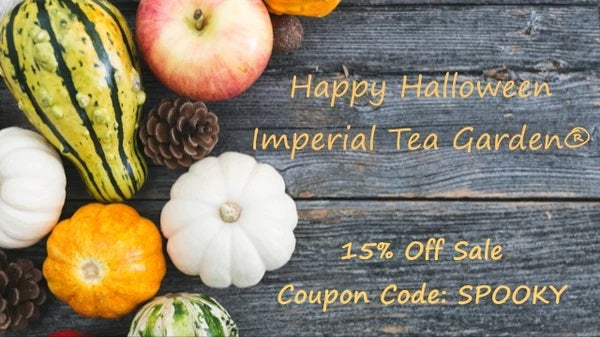by Imperial Tea Garden
December 13, 2017
How to Buy the Best Loose Leaf Tea
This is the first part in a five part blog dedicated to the crucial elements in producing the best loose leaf tea. This seems like difficult task at first because everyone's tastes are so different. Exactly how do we know what is the best loose leaf tea? It's really about maximizing the potential of each tea bush and producing a desired and consistent result rather than producing the best tea leaf per se. Let's break down these elements in detail.
SEASONALITY
Seasonality and the timing of each harvest is paramount when producing fine quality loose leaf teas. The correct "time" to harvest tea leaves depends primarily on the region in which they are grown. "Peak" season is different for each tea producing country and region. Timing the harvest is of the utmost importance. It only takes a few days for a bud to grow into a large leaf and missing the peak days can destroy a crop, as well as style of tea may require that only the buds be plucked or that only a certain number of small leaves be plucked after the bud opens. If there is a dormancy period due to cool weather in the tea field, the first new shoots after this period are of the highest quality and thus the most sought after and usually the most expensive. This is because they have been building up nutrient reserves over the dormancy period for the new leaves. Many growing regions have special names for this first harvest. In India and Nepal, it is called the “first flush,” in China, these teas are known as Pre-Qing Ming teas, in Japan they are referred to as “Shincha.
Each growing region also has a special set of terms for referring to tea harvest periods. In India and Nepal, each harvest is called a “flush” referring to a period of growth in the tea plant. In China and Taiwan the terms used to denote tea harvests are dates in the traditional East Asian lunar & solar calendar.
India, Nepal, and Sri Lanka Tea Harvests
Darjeeling (India) & Nepal
Primarily known for their distinct
black teas, the Darjeeling and Nepali harvest period lasts from late March to early November and is broken up into 4 parts: first flush, second flush, monsoon flush, and autumnal flush. The finest Darjeeling teas are produced from first and second flush.
- First Flush: March – April
- Second Flush: May – June
- Monsoon Flush: July – August
- Autumnal Flush: October – November
Nilgiri (India) & Sri Lanka
The lack of a cold season in growing regions such as Nilgiri in South India and Sri Lanka, tea plants can be harvested year round however "Peak" season is from December through February for high mountain grown Nilgiri black teas. Sri Lanka or Ceylon teas are very seasonal. The best teas from the Eastern District of Uva peak from June through September due to the southwest monsoons. Northeast monsoons result in the teas from Dimbula and other western districts to peak from December through March. Nuwara Eliya straddles the eastern and western districts allowing for year round production of some of the best black teas on earth.
Assam (India)
Full body and malty Assams peak during the second flush. Tea bushes are dormant due to cool weather from December through February.
China & Taiwan Tea Harvests
China is known for fantastic varieties of both
green tea and black teas whereas Taiwan has earned a reputation for producing masterful green and
oolong tea. The harvest season in China and Taiwan varies among the different growing regions and elevations, but in general, the harvest season begins as early as April and can last until late November. Finished teas that are made from young leaves or buds and have a more finite growing season will typically be harvested on or near dates on the East Asian lunisolar calendar.
- Qing Ming “clear bright” - tea picked before April 4-6
- Yu Qian “before the rains” - tea picked before April 20
- Gu Yu “grain rain” - tea picked before May 5
- Li Xia “start of summer” - tea picked before May 21
Generally China has year round tea production depending on geographical location, however quality rapidly declines for tea leaves harvested after the first crop. Best quality is harvested between March though May. Tea produced from larger old growth that doesn't follow a strict harvest calendar is inferior.
Japan Tea Harvest
The harvest season in Japan varies by geographical region as well but typically begins in late April and ends in May. Japan’s sought after first harvest is called Shincha. Japan has four distinct harvest periods but the quality of teas produced from each harvest declines. Look for teas harvested before May to avoid being disappointed! Most quality loose leaf green teas from Japan are produced and consumed by locals.
- Shincha “new tea” - The name given to the first harvest of the year
- Ichibancha “first tea” - Includes entire first harvest season including shincha and typically occurs from late April to May
- Nibancha “second tea” - The second harvest of the year taking place June to the end of July
- Sanbancha “third tea” - The third harvest of the year
- Yonbancha “fourth tea” - The fourth harvest of the year and can take place as late as October
African Tea Harvests
The East African tea producing countries (Kenya, Malawi, Uganda, Rwanda, Zimbabwe, Burundi, and Ethiopia) are able to produce and harvest year round due to the lack of a cold season with peak tea production coinciding the weather. The best teas are harvested during periods with low rainfall and bright sunny days. January/February and July/August are peak harvest times for these tea producing countries. These regions are all producing great loose leaf tea, however, hand plucked over mass produce mechanized harvesting will always yield better results.
Click the following links to get more information on how to buy the best teas online
Tea Buying Guide - How to Buy the Best Tea Online
Imperial Tea Garden
Author
Leave a comment
Comments will be approved before showing up.





Imperial Tea Garden
Author